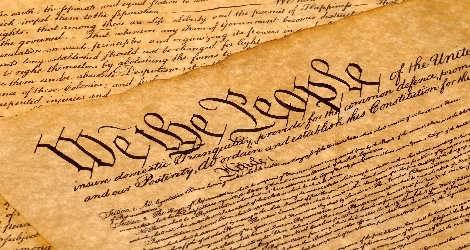5. Income Distribution as a Market Failure
Competition requires firms to pay workers and other input owners what they add to the value of the goods being produced (i.e., the value of their marginal product). Thus, income distribution is justified on the “to each according to his or her contribution” criterion. Of course we have other criteria of fairness as well.
More importantly, many of the market failures we encounter in actual “real world” markets create income distributions that do not reflect any of our criteria of fairness. For example, when monopolies are unregulated, they increase profits by restricting output and raising prices.
In general, we appreciate that income distribution in our economy is relatively fair, but there is still a need for “redistribution” by the government. The larger question is how are we to pay for the social goods and services provided through the public sector. Very generally, we want the tax to be related to the benefit: Do we get what we pay for?
Our society must depend on our representatives in government to redistribute the returns that occur during market transactions. As noted, the utopian model of competitive free markets distributes income according to “contribution.” Competition requires that input owners are paid according to how much they contribute to the final product. But even if our economy were populated with perfectly competitive markets—which it decidedly is not—our society recognizes several other moral values relating to distribution. At the very least, we require a social minimum safety net.
Society’s choices with regard to income distribution balance several moral values: to each according to contribution to society; to each according to effort or sacrifice; to each according to need; to each according to “rights” or other “merit.” For example, we feel strongly that veterans and the disabled and victims of natural disasters deserve special consideration.
We also consider two broad principles of fairness in taxation: the ability-to-pay principle and the benefit principle. Associated with the idea of “ability” is the idea of “equal sacrifice.” When programs have direct benefits to certain groups, it may be appropriate for them to pay more than the general public. In cases where all are assumed to benefit equally, such as with public goods, the ability-to-pay principle attempts to spread the costs fairly. The equal sacrifice principle takes account of the diminishing marginal utility of income. Since dollars mean less to those with greater income, they should pay more. This justifies a progressive tax structure. But our tax structure falls short both in terms of efficiency and fairness.
Very generally, our system of taxes and income distribution has failed to reflect our ideas of fairness and our social goals. Especially during the1980s and more recently in the 2000s, the backbone of our mixed economy, the middle income class, has withered and is on the verge of extinction. This trend does great harm to our sense of community and the possibility of fulfilling the American Dream.
6. Our Macroeconomic Policy Failure
Our government is armed with powerful macroeconomic tools and the knowledge of how best to use them. Fiscal policy depends on the Administration and Congress to adjust taxes and spending so that aggregate demand (spending by consumers, businesses, and government) matches our economy’s capacity, or aggregate supply. Thus we have the ability to overcome short-term imbalances and maintain full employment, rapid economic growth, and little or no inflation.
Monetary policy is carried out by the Federal Reserve and ideally is coordinated with fiscal policy to achieve the same goals. The Federal Reserve controls the money supply (and thus interest rates) to influence investment and to some extent consumption. In long periods of our recent history we have had great success in applying macroeconomic policy. During the 1960s and the 1990s, we experienced long periods of economic growth, low unemployment, and low inflation.
During the 1970s, a new phenomenon, “cost-push inflation” proved less amenable to our policy tools. During the 1980s and again in the 2000s most of our difficulties were created by questionable practices in the financial sectors.
There are inherent tendencies in the banking, Wall Street and housing sectors of the economy that, if they remain unregulated, invariably lead to downward spending spirals. The market’s usual self-equilibrating forces are overwhelmed.
The good news is that economists know how to turn around such downward spirals by using aggressive stimulus programs. The bad news is that our politicians are more interested in their petty partisan squabbles than carrying out their responsibilities, at which point market failure becomes government failure. Some politicians actually welcome huge deficits and unemployment since it gives them leverage to cut social programs.
When market failures and policy failures combine to create recessions, they endanger the American Dream since job opportunities are eroded. When unemployment is below 5 percent, workers become scarce and the wages and benefits of employees are bid up. The power of unions is increased. When unemployment is high, more power shifts to the employer. The threat of being fired is real and little resistance can be mounted when wages and benefits are cut. Health care insurance is ended. In the most egregious scenarios, firms have been allowed not only to end pension contributions but to raid their employee pension funds to strengthen the firm’s profitability.








